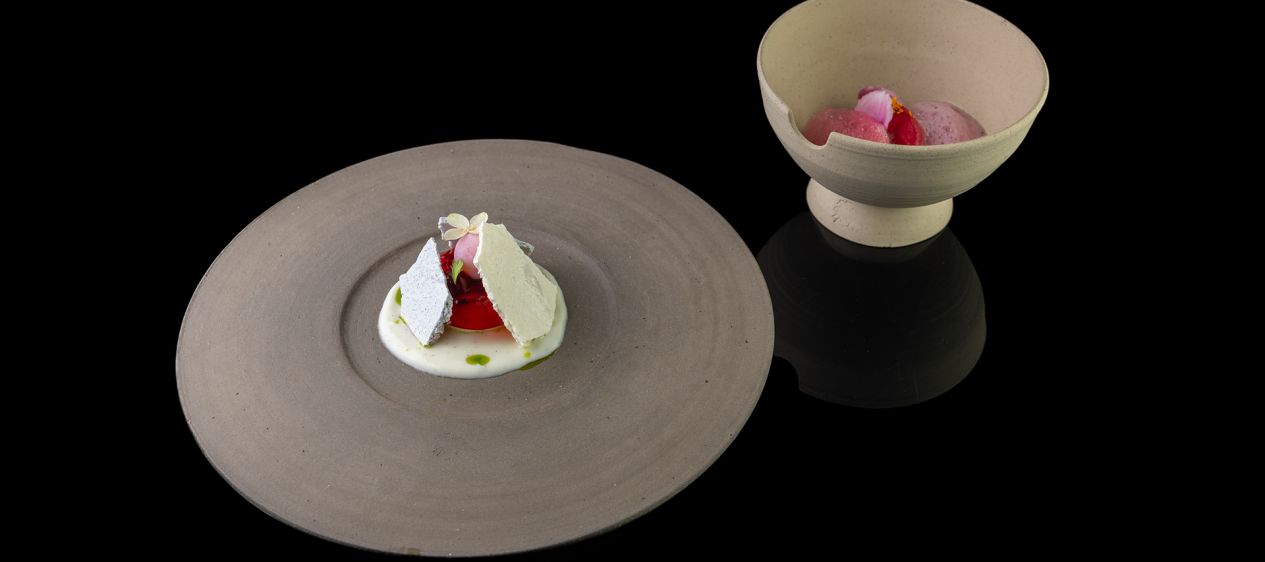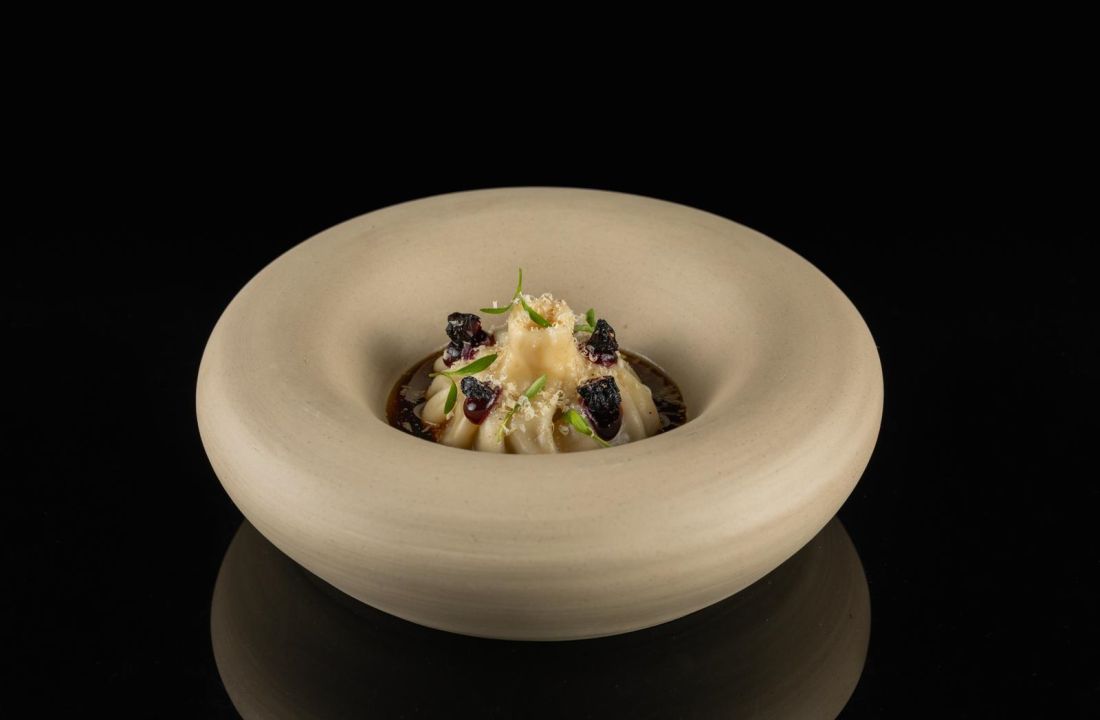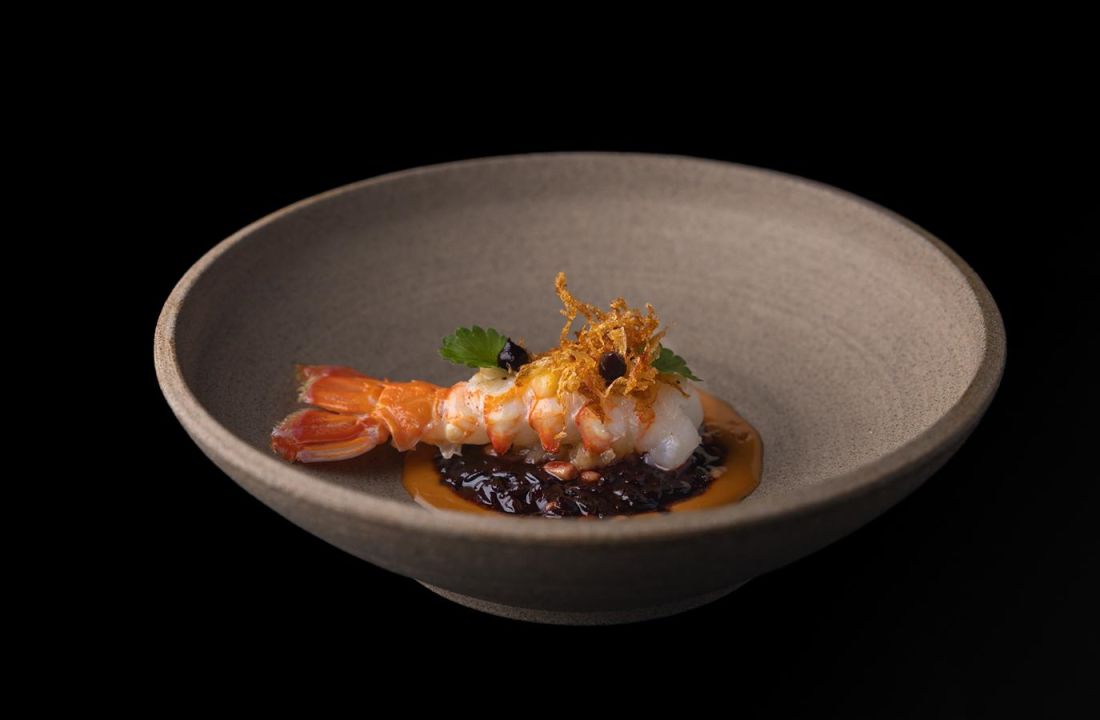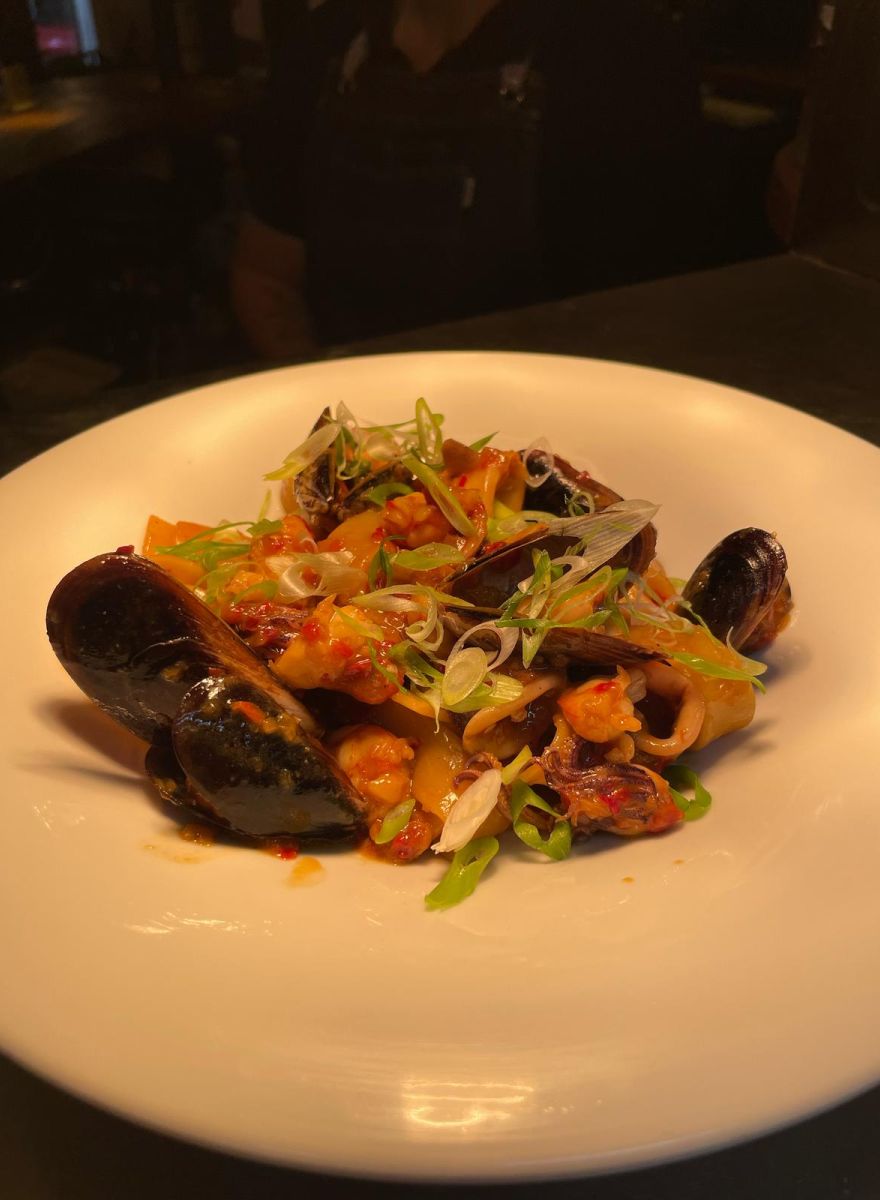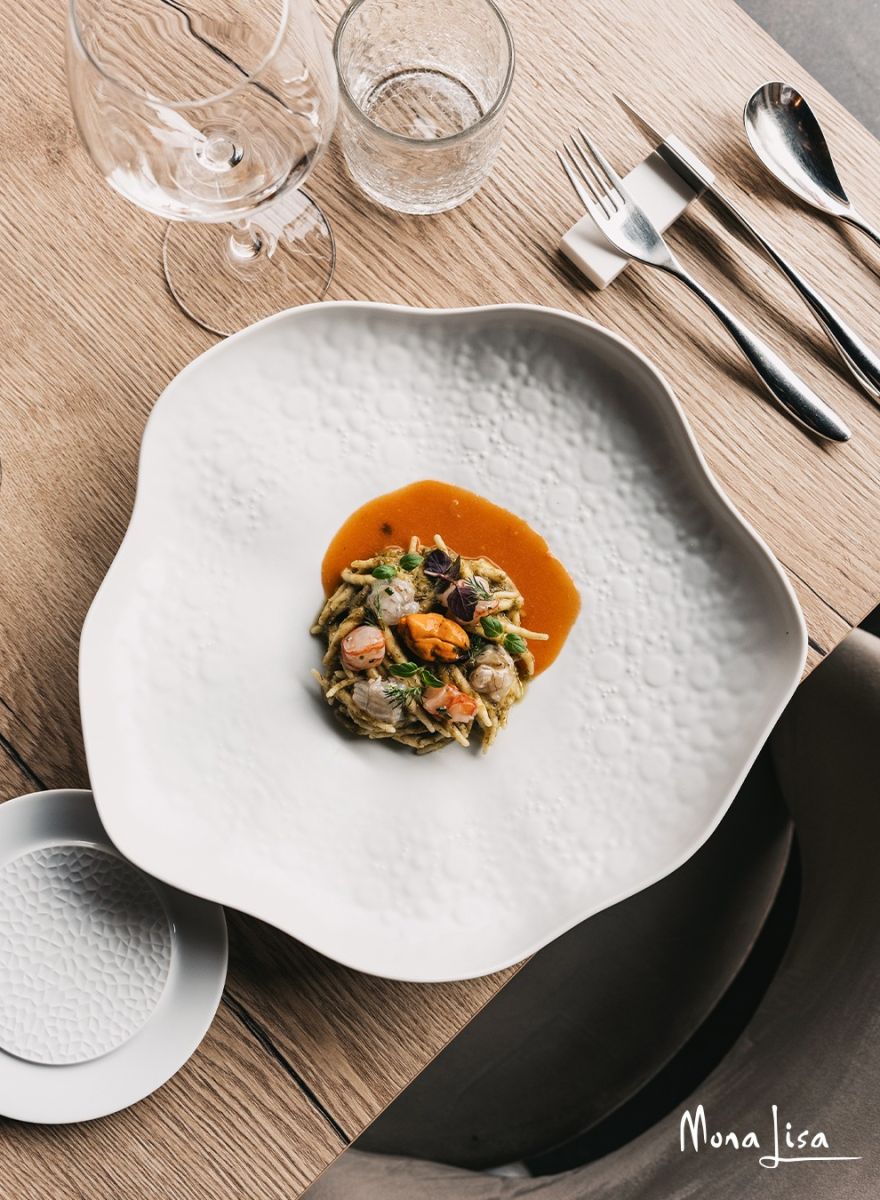Hibiscus dessert
In this country, you can not only enjoy excellent German cuisine, but also dishes from all over the world. The culinary spectrum is constantly being expanded to include new national cuisines. One that has long been known in Germany is Russian cuisine. And this is available - even in star quality - for example at Erkelenz by Alexander Wulf, for example. The top chef serves authentic dishes from his Russian homeland in his restaurant. For this, he only uses regional and organic ingredients. Now, he has put together a delightful Russian 3-course menu for you to try. So, if this recipe piques your interest, be sure to explore the other dishes waiting for you at the bottom of the page!
Kefir-buttermilk cream
| 200 g | Buttermilk |
| 200 g | Kefir |
| 200 g | Creme Fraiche |
| 150 g | Sugar (or adjust sugar to taste) |
| 1 | Vanilla pod |
| 1 | Lime (juice and zest) |
| 1 | Pinch of salt |
| Stir everything with a whisk until smooth, flavour with sugar and lemon juice |
Sirnik
Pass the cottage cheese through a strainer and mix well with the remaining ingredients. Shape the mixture into 30-gramme balls, then coat in flour and press into the desired shape. Freeze the moulded balls. Then fry in a pan in oil until golden brown and finish cooking in a preheated oven at 180 degrees for 7-8 minutes.
| 1 | Packet of Russian curd cheese |
| 50 g | Sugar to taste |
| 1 | Vanilla pod |
| 1 | Egg |
| 2-3 EL | Semolina |
| 1 EL | Flour |
| 1 | Pinch of salt |
Froth
| 100 ml | Soft as butter |
| 400 ml | Hibiscus tea |
| Sugar | |
| Lime juice | |
| Vanilla | |
| Salt | |
| 2 g | Lecithins |
| 1 g | Xanthan gum |
| Blend everything with a hand blender |
Hibiscus sorbet
Mix all the ingredients thoroughly in a bowl with a whisk and then bring to the boil. Then strain the mixture through a sieve to remove any lumps. Pour the strained mixture into a PacoJet jar and freeze completely in the freezer. As soon as the mixture is frozen, process it in a PacoJet machine.
| 600 ml | Hibiscus tea base |
| 150 g | Sugar (or adjust to taste) |
| 1 leaf | Gelatine |
| 4 g | Pectin |
| 1 pinch | Salt |
| Vanilla pod | |
| 20 g | Lime juice |
Hibiscus gel
Measure out 1.2 grams of agar-agar for 100 ml of liquid and boil the mixture for 2 minutes, stirring constantly. Pour the hot liquid onto a baking tray and leave to cool completely in the fridge until it solidifies. Then pour the solid mixture into a Thermomix and puree thoroughly. Then pass the mixture through a sieve to obtain a smooth consistency.
| 1 L | Hibiscus tea base |
| Flavour with sugar | |
| 30 ml | Lime juice |
| 1 pinch | Salt |
Hibiscus jelly
Heat the hibiscus stock together with 18 g vegetable gelatine and 2 g agar-agar in a pan. Bring the mixture to the boil, stirring constantly, and simmer for about 2 minutes. Then strain the liquid through a sieve and pour evenly in a thin layer onto a preheated baking tray. Leave to cool completely in the fridge until the mixture is firm.
| 400 ml | Hibiscus stock (sweetened with sugar) |
| 18 g | Vegetable gelatine |
| 2 g | Agar-Agar |
Buttermilk hibiscus balls
Soak the gelatine in cold water until it softens. Then carefully heat the soaked gelatine in a pan with the lime juice until it has completely melted - make sure that the mixture does not boil. Mix the melted gelatine with the remaining ingredients and pour into the prepared moulds. Then place the filled moulds in the freezer until the mixture is completely frozen.
| 500 ml | Buttermilk |
| 200 ml | Hibiscus stock |
| 7 | Gelatine sheets |
| 150 g | Sugar |
| 30 ml | Lime juice |
Hibiscus meringue
Start by beating the egg whites at low speed until frothy. As soon as foam forms, gradually increase the speed and slowly add the sugar. Continue beating until a stable, white mixture forms. Spread this in a thin layer on a silicone mat and leave to dry in a preheated oven at 105 degrees for 30-40 minutes until the mixture is completely dry.
| 300 | Egg white |
| 600 | Sugar |
| Zest of two limes | |
| Hibiscus powder |
